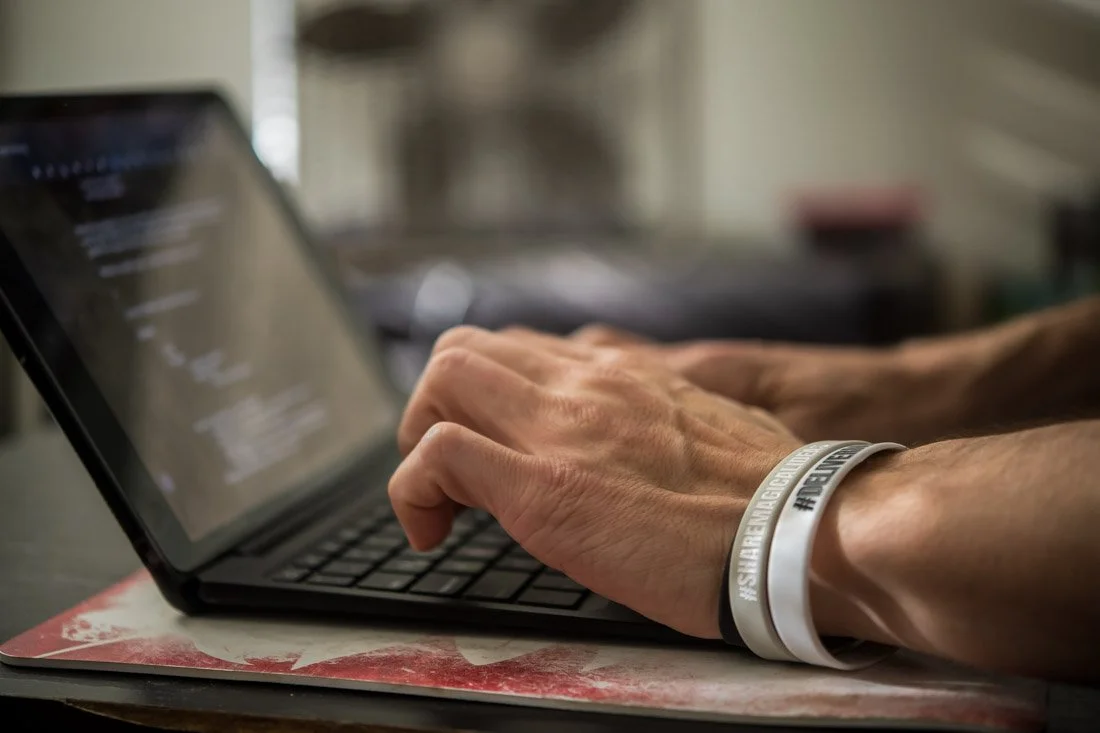The workaround
If the room in which you’re speaking is not at full capacity…
…your photographer needs to work around it.
In the 400-500 live events I’ve worked in the past, I can probably count on two hands the amount of times the house was at full capacity.
Whether it’s a conference or privately ticketed event, things happen and those who were scheduled to attend don’t make it into the room.
Regardless if the room is fully packed or there’s 10 people spread throughout the space, it’s your photographer’s job to make sure these empty seats don’t become an eyesore in your photos.
While the lack of participants in the room is not the fault of the speaker by any means, having photographic evidence of empty chairs is a bad look, in general.
It’s not the way speakers need to present themselves to event professionals who are looking to find speakers for their stages.
As a result, that means that I spend a lot of time doing a lot of workarounds.
How?
I achieve this in two ways.
First, during the speaker’s keynote address, I spend a large amount of time circling the space, looking for clusters of heads sitting together.
Could be a large chunk, or it could be 2-3 stragglers sitting kinda sorta near each other.
Then, I frame out the empty space on the left and right sides and use those backs of heads to fill in the space with people as the speaker is delivering their talk on stage.
While in that position, I’ll grab a variety of wide, medium and close-up photos to provide some visual variety in order to leverage that vantage point beyond one or two photos.
Is it a pain in the ass? Yeah, it sure is.
But, it’s worth it in the end as we made a less-than-ideal situation work.
I had to put on my workaround cap the other day during Heather’s keynote.
While the stage looked awesome and there was cool smoke and red lighting everywhere, the room was half-to-three-quarter capacity at best.
Bummer, yes, but it’s certainly not the end of the world.
While pacing around the aisles and the back of the house, I found plenty of clusters of heads throughout the space and knew that I’d be able to mask the rows of empty seats up front and on the wings:
Now, if you’re really, REALLY looking, you’ll notice an empty seat here and there, but ultimately, photos like these were created with the intent of drawing the viewer’s eye to the stage and speaker.
So, if you’re not looking for it, you won’t immediately notice.
Sneaky, sneaky…I know :)
The second option for your live event photographer to avoid dead spaces in the crowd is to capture photos of just you on the stage - especially when the stage has a lot going on like this one:
While these images lack participants, they do create high-quality “hero” shots of you on stage passionately delivering your material.
These types of photos gives your marketing team a slew of options when creating website banners, sales pages, speaker one sheets and other digital and printed, promotional materials.
At the end of the day, speakers want to speak to standing room-only crowds.
And guess what? So do I…
…but sometimes, that’s simply not in the cards.
The key to maximizing the value of hiring a photographer to cover your live event is that they’re able to play the cards they were dealt by finding the best vantage points in the room to capture you looking as inspiring, entertaining and confident as possible while on stage.
Be sure to talk with your photographer about this in the event that your next keynote is presented to a room that’s not 100% capacity so you don’t end up with photos that are filled with rows of empty chairs.
For more information on visual storytelling strategies for experts who speak, write books, facilitate, run workshops and consult, I invite you to sign up for my blog.
That’s where I share the goodies - check it out for yourself :)


















